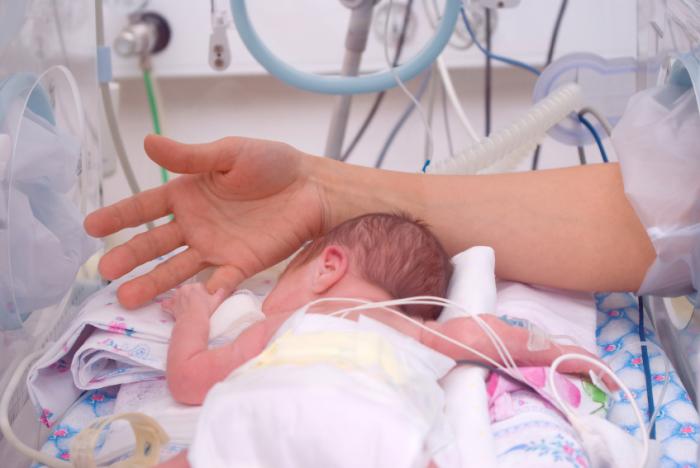Tension headaches, also known as tension-type or stress headaches, are the most common type of primary headache. A primary headache is a headache that is not caused by another condition.
Up to 70 percent of people will have experienced a tension headache in the past year, according to the World Health Organization.
Tension headaches are often described as a pressing or tightening pain of mild to moderate intensity that affects both sides of the head. They often come with stiff and aching neck and shoulder muscles. They tend to develop slowly and increase in intensity.
The pain from tension headaches causes discomfort. However, it is not usually severely disabling like migraine headaches often are. The pain is not made worse by physical activity such as walking or climbing stairs. They can be made worse by physical or mental stress.
Tension headaches can occur at any age but usually develop between the ages of 25-30 years. They are most common in people aged 30-39 years.
Women are more likely to experience tension headaches than men, with over half of women in developed countries experiencing such headaches compared with over a third of men.
Contents of this article:
- Types of tension headache
- Causes of tension headache
- Treatment for tension headaches
Types of tension headache
The International Headache Society (IHS) classify tension headaches as either episodic (occasional) or chronic (persistent or constantly recurring). There are also subcategories to help doctors make a more accurate diagnosis and decide on the best treatment:
![[Woman with tension head ache]](http://www.medicinetechnews.com/images/201609/head-ache.jpg)
Tension headaches are usually made worse by physical and mental stress.
Episodic tension headaches
- Infrequent episodic tension-type headacheAt least 10 episodes per year occurring on less than 1 day per month on average without nausea. Headaches may last from 30 minutes to 7 days, and may be accompanied by either sensitivity to light or sound.
- Frequent episodic tension-type headache
At least 10 episodes occurring on between 1 and 14 days per month on average for between 12 and 180 days per year without nausea. Headaches may last from 30 minutes to 7 days, and may be accompanied by either sensitivity to light or sound.
Chronic tension headaches
- Headache occurring on at least 15 days per month on average for more than 3 months. They may be accompanied by mild nausea or either sensitivity to light or sound. Headaches may last for hours or may be continuous.
Chronic tension headache can evolve over time from episodic tension headache in some people, the IHS note.
Causes of tension headache
The exact causes of tension-type headaches are uncertain. A number of factors have been linked with triggering such headaches, including:
- Physical or emotional stress
- Anxiety
- Depression
- Lack of sleep
- Lack of exercise
- Eye strain
- Dehydration
- Regular exposure to loud noise
- Tiredness
- Poor posture
- Jaw clenching
The triggers for tension-type headaches can differ from person to person.
Keeping a headache diary can help people identify and avoid headache triggers and patterns. Information can include when a headache started, the food and drink consumed over the past 24 hours, what was being done before the pain, and the amount of sleep the previous night.
Preventing tension headaches
![Woman sleeping happily]](http://www.medicinetechnews.com/images/201609/woman-sleeping.jpg)
Getting enough sleep is one way to help prevent tension headaches.
Certain lifestyle changes may also help prevent tension headaches, such as:
- Getting enough sleep regularly
- Practicing good posture when sitting, standing, and doing other daily activities
- Taking regular breaks when working at a desk
- Regularly stretching and exercising neck and shoulder muscles during office work
- Engaging in more vigorous exercise, which may also help with sleep patterns
- Getting eyes checked regularly and using the correct glasses
- Managing stress
Treatment for tension headaches
Tension headaches are usually treated with over-the-counter medications such as aspirin, ibuprofen, or acetaminophen to relieve the pain.
It is important to note that the overuse of such pain medications can increase the risk of episodic tension headaches developing into chronic tension headaches. This can happen because rebound headaches may occur after each medication dose wears off.
Some people also find that home remedies may be enough to help relieve their headaches. These remedies include taking a hot bath or placing an ice pack on the head.
Relaxation techniques, massage, biofeedback, and acupuncture can help some people relieve their tension headaches. Evidence for their effectiveness is limited, however.
Cognitive behavioral therapy can also be helpful for people with chronic tension headaches. This therapy helps people reduce the underlying stress and anxiety that may be causing their headaches.
When to see a doctor
People with headaches are advised to see a doctor if:
![[Man holding face in pain]](http://www.medicinetechnews.com/images/201609/man-holding-face.jpg)
People should see a doctor if the headache becomes severe enough to affect everyday activities or leads to vision loss and movement problems.
- The headache becomes so severe it affects everyday activities
- A change occurs in the severity and frequency of tension headaches
- They are over 50 years of age and have no previous history of headaches
- Speech difficulty, vision loss, and movement problems accompany headaches
- A headache develops suddenly and feels like the worst headache they have ever had
- They have a new type of headache and they have a history of cancer
- They become pregnant – some medications should not be taken during pregnancy
- Medication side effects occur
- Pain-killing medications are needed more than three times a week
- Previously effective medication no longer works
A doctor can often diagnose tension headaches by asking questions about the frequency and intensity of headaches, as well as about health and lifestyle factors. They may also want to ensure that a person is not experiencing other types of headache, such as:
- Migraine – a debilitating headache disorder that is marked by throbbing pain usually affecting one side of the head. It is often accompanied by nausea, disturbed vision, and other symptoms.
- Cluster headaches – recurring headaches that suddenly occur in groups and result in severe pain on one side of the head. They are often accompanied by symptoms such as restlessness, watery eyes, red eyes, pain that is worst behind the eye, and a runny nose.
- Sinus headaches – caused by inflammation of the sinuses due to an infection.
- Rebound headaches
Depending on a visit to the doctor, it may also be necessary to use various tests and imaging scans to rule out other causes of headaches. These causes include tumors, infections, bleeding, blood clots, and other abnormalities in the brain.



